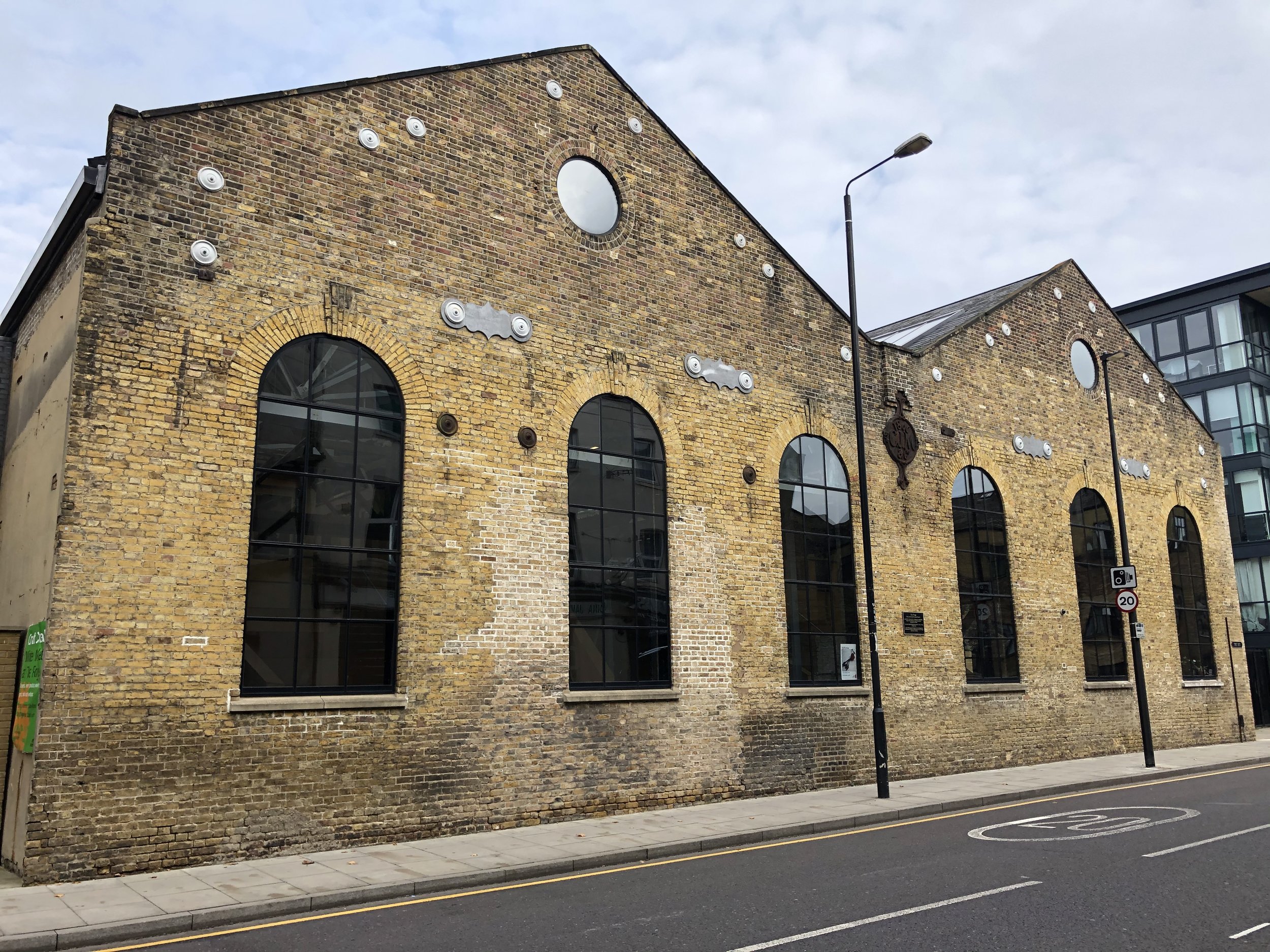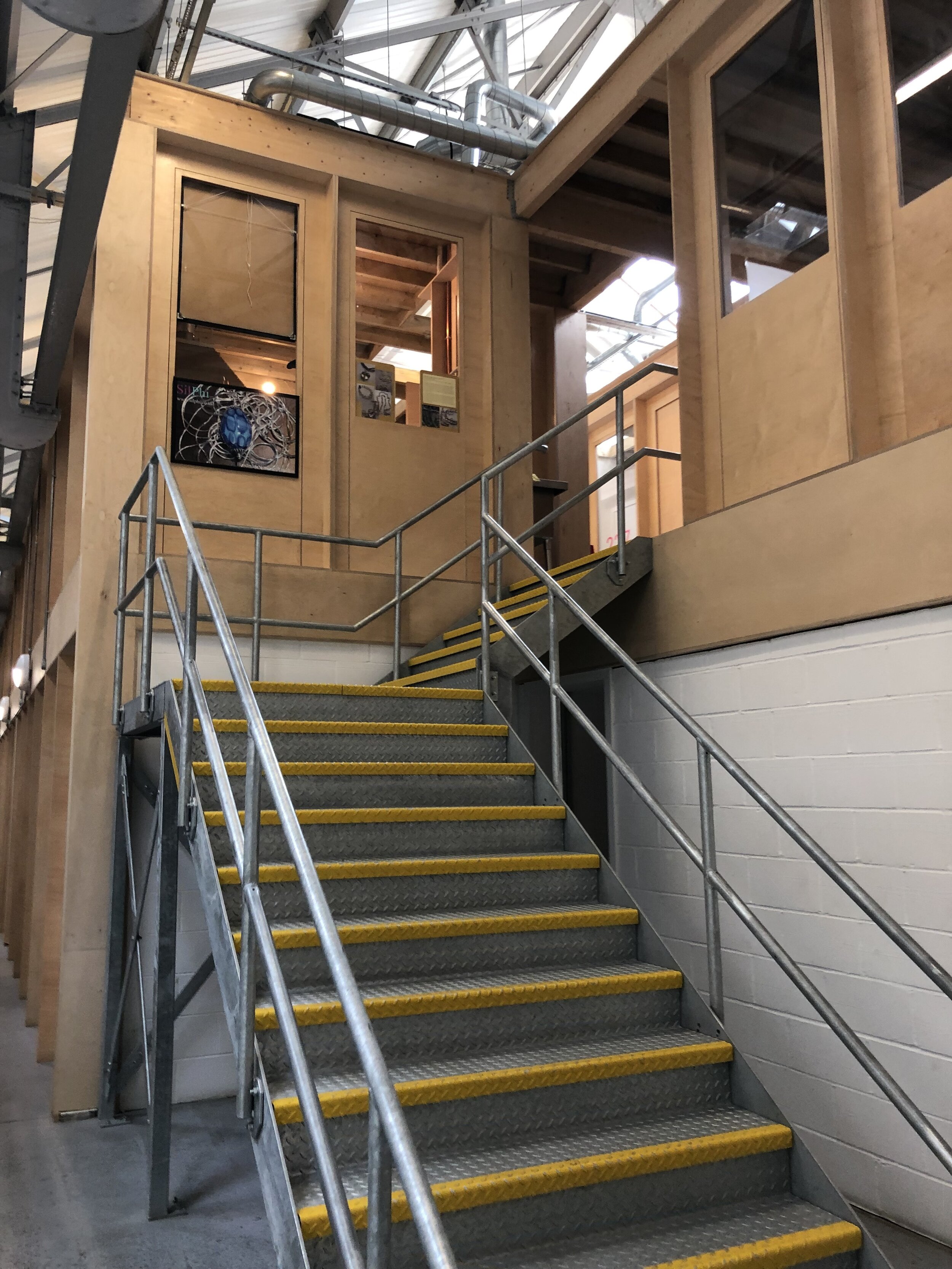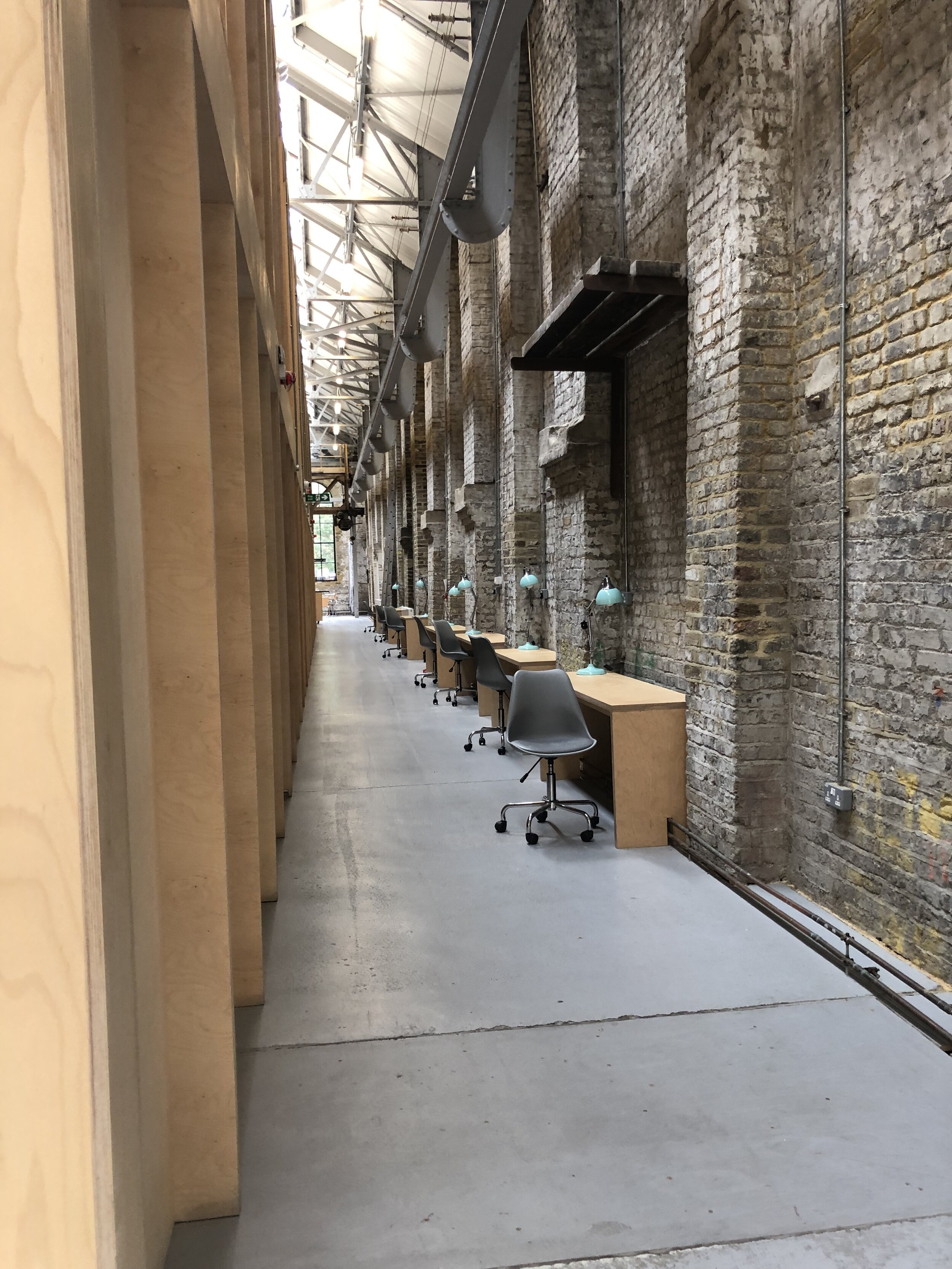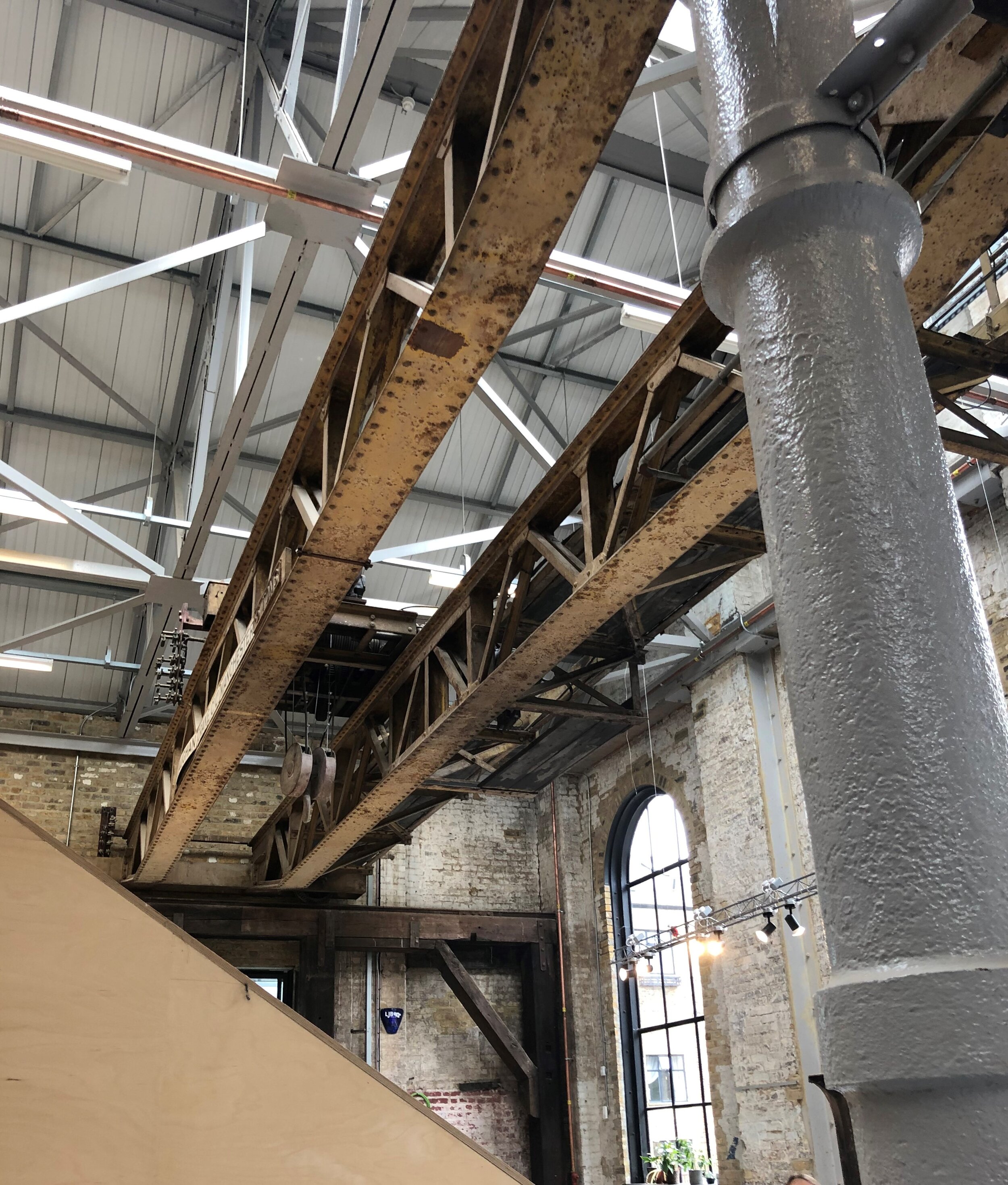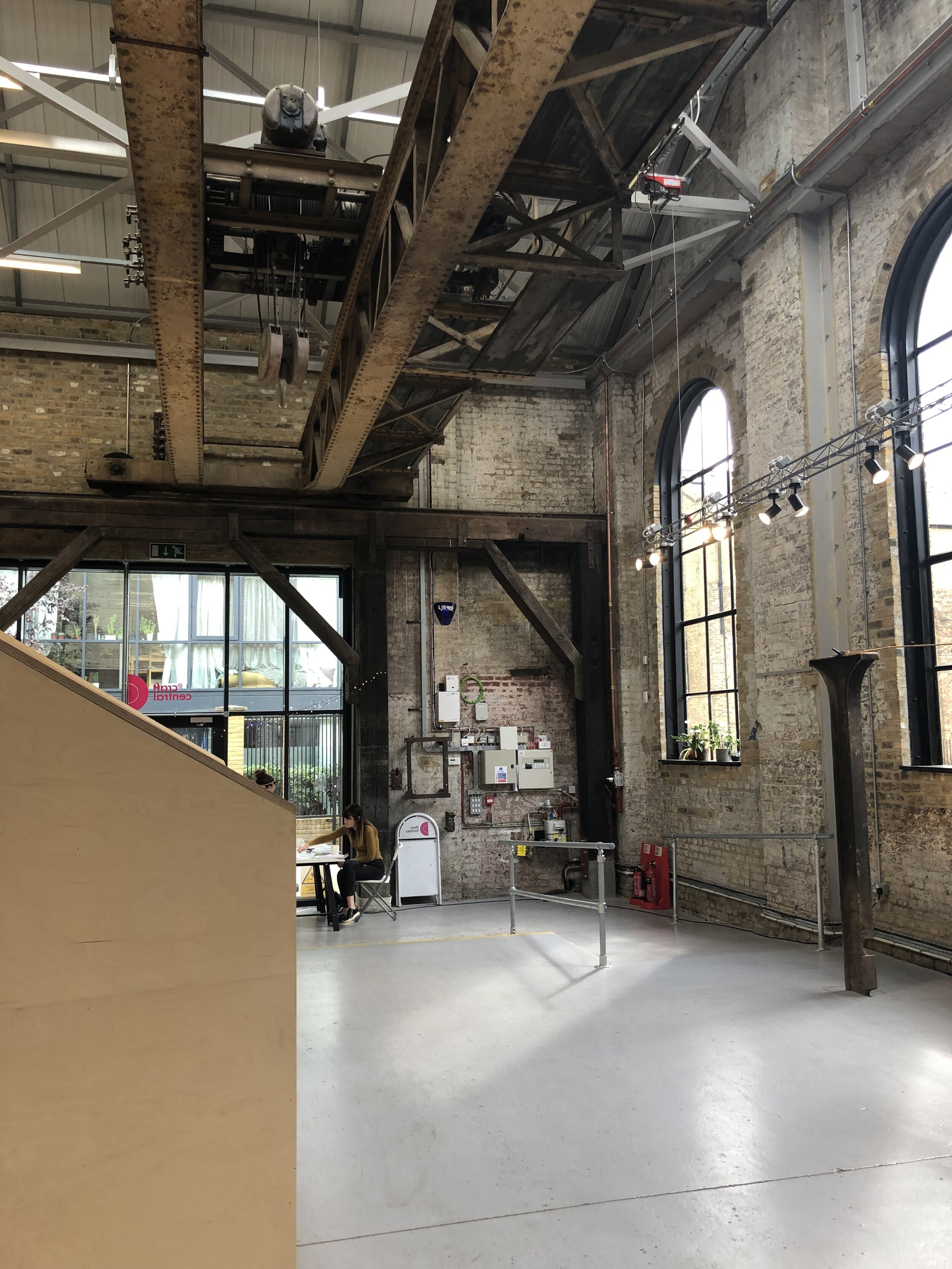The Forge Revived: New Industry for Old
The Forge in Westferry Road, one of the splendid 19th century industrial buildings I point out on my walk Shipbuilding to Banking: The Isle of Dogs’ Story was open to visitors for the 2019 Open House weekend. It is possibly the only surviving shipbuilders’ forge in England outside the royal dockyards and has now been imaginatively re-purposed for registered charity Craft Central as a creative workspace and co-working space for artists, designers and similar entrepreneurial small businesses.
Now Grade 2 listed, the building was once part of the huge Millwall Iron Works site on the Isle of Dogs’ riverside which in the mid-19th century was a world-leading centre of ironwork and particularly iron ship building. With the Thames Ironworks just along the river at Blackwall, according to one view at the time, it was “of infinitely greater national importance” than the royal dockyards and had a production capacity for iron ships and armour greater than the whole of France.
I’ll come back to the site’s earlier industrial history, but first must describe its recent reincarnation. Open House gave an opportunity to display the ingenious way The Forge has been converted to its new use without detracting from the elegance and power of the Victorian structure.
An original design concept by Emrys Architects developed by iSpace Corporate Interiors involved inserting a large two-storey birch wood structure into the huge interior space. This provides workspaces of a variety of sizes on two levels, making maximum use of natural light. Along the side walls are desks that can be hired by the month. The aim was to have shared facilities for craftspeople who don’t want the commitment of a permanent studio.
This great wooden implant slopes down at the south end with tiered seating facing into an exhibition area stretching the full height of the building and sitting beside those huge round-topped windows that you see from road outside.
All of this wooden structure is virtually free-standing so as not to impinge on the listed exterior and internal features. These include two old gantry cranes running the whole length of the building above the new structure, one with a very rare timber frame. There are six cast iron columns which are hollow. As well as supporting the roof, these acted as downpipes carrying rainwater gathered from the roof above to steam engines below. Remains of furnace chimney breasts can be seen on the west wall which also contains small circular windows which once were unglazed to provide ventilation – the forge must have been swelteringly hot! You can find the conversion described more fully on Craft Central’s website here.
Altogether it seems a very satisfying and successful adaptation, the bright colour of the birch wood addition standing in respectful contrast to the older industrial architecture. It would be good to think that craftspeople starting businesses there today might take inspiration when they look at the older fabric of the building and think of the great skills and industrial accomplishments that were seen within those walls in the Victorian past.
For The Millwall Iron Works was indeed a place of distinguished industrial achievement. It was home to the shipbuilding exploits of John Scott Russell, a civil engineer, naval architect and one of several ship builders from Scotland who came to set up shop in Millwall, on the western side of the Isle of Dogs, in the early and mid-19th century. There they produced hundreds of ships, commercial and naval, including ships for the British Admiralty and for foreign powers such as the King of Denmark and the Czar of Russia. Russell’s most famous product was the SS Great Eastern, an innovative iron ship designed by the great engineer Isambard Kingdom Brunel and launched from Millwall Iron Works in 1857. It was far larger than any ship that had been built at the time and would remain the world’s largest until the end of the 19th century.
The Great Eastern project reduced Russell to bankruptcy. The Works were sold and from about 1860 occupied by C. J. Mare & Company, whose founder Charles John Mare was a shipbuilder of high reputation but prone to financial mis-steps. The site’s next owner was the wordily named Millwall Iron Works Ship Building and Graving Docks Company which Mare was probably involved in forming with investors including the Overend Gurney Bank. In the 1860’s the Millwall Iron Works, occupying premises either side of Westferry Road, was the most ambitious industrial concern ever established in Millwall, employing between 4,000 and 5,000 workers in reputedly good working conditions with a canteen, sports club and works band.
During this period, The Forge laid the keel for HMS Northumberland. The launch of that ship in front of “a brilliant and numerous assembly” in 1866 was something of a fiasco - the vessel getting stuck on the slipway and nearly buckling in the process – which caused delay and terminal financial difficulties for the Millwall Iron Works Ship Building and Graving Docks Company. This contributed to the collapse of Overend Gurney and the first “Black Friday” – a financial crisis in which 200 companies, including other banks, failed.
Bankruptcy seems to have been a common feature of industrial life in the area at the time. As well as John Scott Russell’s bankruptcy, the company for which he built the Great Eastern went into liquidation. And Charles John Mare was declared bankrupt no less than three times, although the first two, at least, did not stop him continuing a productive career. Nor should these financial difficulties overshadow the great shipbuilding and other achievements around this part of the riverside in the Victorian age. It is good to see that - to help bring those times to our minds - C J Mare & Co’s ownership is still commemorated in a plaque on the front wall of The Forge.

